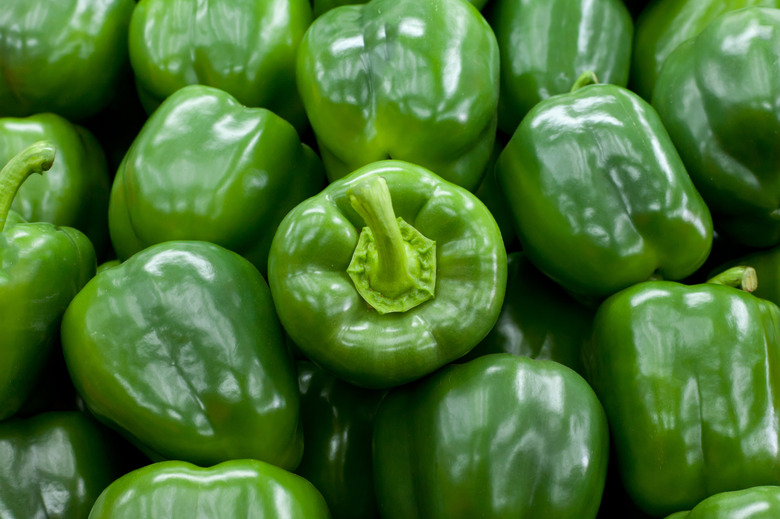How Deep Do The Roots Of Green Bell Peppers Grow?
We may receive a commission on purchases made from links.
Bell peppers (Capsicum annuum) are widely grown in home gardens, in part because of their versatility in the kitchen and in part because of their productivity in the field once the plants are established. Getting established includes growing a substantial system of roots because peppers are heavy feeders. Under ideal conditions, a bell pepper plant's central taproot can grow to 3 feet or longer, but peppers can produce just as well with a web of lateral roots.
Tip
A direct-seeded bell pepper may have a taproot that grows to 3 feet or more in depth, although transplants typically produce a fibrous root system, lacking the taproot.
Methods of Growing Bell Peppers
Methods of Growing Bell Peppers
The depth of a bell pepper plant's roots is determined in large part by how you choose to plant. If you live in a warm climate with a long growing season, you can sow your pepper seeds directly into their beds. In those circumstances, as long as your soil is deep and friable, your pepper plants will grow a deep taproot that may reach 36 inches in length. This helps root the plant securely as the fruit develop and can also help it cope with brief lapses in watering.
For most gardeners, it's more practical to start or buy seedlings and then transplant them once the weather and soil are warm. In this case, your pepper plant's taproot will be constrained by the size of your starter pot and may also be bent or damaged during transplanting. When that happens, the plant compensates by increasing its growth of lateral roots in a zone reaching from near the soil's surface to a depth of 18 to 24 inches.
A December 2019 study conducted at Purdue University evaluated the growth and yield of bell pepper plants with a healthy, carefully preserved taproot as compared to those with the network of lateral roots typical of most transplants. The study found no difference in yields or plant health, so don't worry about whether your plants do or do not have a long taproot. The length of your growing season is more important, so grow from seeds or transplants accordingly.
Bell Peppers in Containers
Bell Peppers in Containers
While root depth is a largely a nonissue in a garden bed (because your pepper plants will sort it out for themselves), that's not the case when you're planting your peppers in a constrained environment, like a raised bed or a container on your patio. There, if you don't provide adequate soil, your peppers simply won't flourish.
A suitable container for peppers should be at least 18 inches deep, but 24 inches or more is better and provides more room for the root system to develop. Your container should be at least 24 inches in diameter as well, and using a larger-diameter pot if you have room for it is helpful.
If you want to grow multiple pepper plants in a confined space, you might find one larger planter or raised bed to be a better option than multiple smaller containers. Leave a foot or so between plantings, but if you live in a hot and sunny environment, you might find that it's helpful to plant two seedlings in each hole rather than one. They'll help protect each other from sun scald, and doubling up on plants increases your yield from a given space.
Care of Your Pepper Plants
Care of Your Pepper Plants
Pepper plants do best with ground-level, drip-style irrigation, which avoids getting the leaves wet and helps prevent a variety of damp-loving diseases from getting a foothold. If you start your bed with transplants, they'll also need regular deep waterings with a hose for the first couple of weeks until they're well-established.
Peppers prefer consistently moist soil over periodic soakings, so water them whenever the soil begins to feel dry. Once or twice a week in hot weather will usually suffice, but it depends on your local climate. Peppers in pots, containers or planters should be checked more often and may even need daily watering.
Because peppers are heavy feeders, they'll benefit from added nutrients. If you're unsure of your soil quality, have it tested and apply fertilizer as needed before planting to make up for any deficiencies. Alternatively, dig in a balanced, slow-release fertilizer before planting. Side-dress the plants monthly with a liquid fertilizer. Plants may need some physical support as well once they start bearing. A sturdy stake or tomato cage is usually all they'll require.
